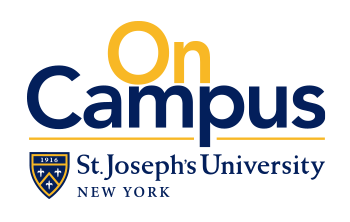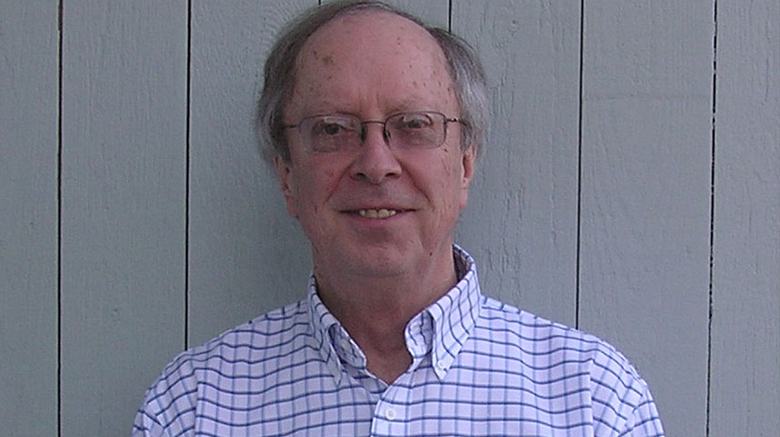Intention alone – without medicine, radiation and chemotherapy – can potentially heal cancer, says an SJC Long Island sociology professor who has studied alternative healing for over 35 years.
While teaching at St. Joseph’s College and a doctoral candidate at Fordham University, William Bengston, Ph.D., teamed with a Queens College geology professor to begin practicing an alternative healing method on mice infected with mammary adenocarcinoma. His method, now referred to as the Bengston Energy Healing Method®, is used by more than 100 practitioners across the globe — including oncologists — to treat cancer and other diseases.
“It appears I’ve stumbled on an alternative healing method that is effective with cancer, Alzheimer’s and a bunch of other conditions, including depression and bipolar disorder,” said Dr. Bengston, 68, the nine-year president of the Society for Scientific Exploration, which studies scientific anomalies and has membership in 45 countries. “Right now, I’m concentrating on ‘reverse engineering’ the results I get in the lab to make them scalable and more conventional.”
His History of Healing
Dr. Bengston of Port Jefferson didn’t always believe in alternative healing. In fact, he started out as quite the skeptic.
“I was fixed of a chronic bad back a zillion years ago by a healer, and I then had the choice to either ignore what happened or to try to find out what happened to me. I chose the latter,” he said.
Although his doctorate is in sociology/criminology, Dr. Bengston, who’s taught sociology at St. Joseph’s since 1974, noticed a connection between sociology and the medical field.
“In addition to my training in quantitative data analysis, it turns out that the conceptual skill sets in sociology go a long ways toward understanding disease and other medical problems,” he said. “For example, I’ve developed a working model of how placebos work based on group bonding. So far, the model is working.”
Dr. Bengston’s research of alternative healing began in the 1970s with the help of David Krinsley, then chair of the geology department at Queens College. The chair of the biology department created the test: lab mice were injected with a cancer that was 100 percent fatal within 27 days of injection. If the mice lived past 27 days, it would prove that Dr. Bengston’s method — which he had never practiced before — worked.
And it did.
The Technique
Dr. Bengston says his technique is belief-free — meaning that specifically skeptics can play the role of healer. In this case, volunteers — which have included students and faculty — place their hands on the mice cage while visualizing personal images and trying, with little effort, to feel an energy flow from their palms.
“The images each person uses are generated by a personal list, prepared prior to the experiment, of 20 outcomes wanted in his or her life — specific goals that involve their own health, ideal jobs, material aspirations or other people,” Dr. Bengston wrote in his article “Breakthrough: Clues to Healing with Intention,” published in EdgeScience magazine. “Each item on the list is translated into an image that represents the achievement of that particular goal. These personal images are then memorized, and the prospective healer practices cycling through them in a kind of mental filmstrip loop. This technique, rather than slowing down brain activity through some sort of meditative technique, actually speeds up brain functioning and activity through the rapid visualization.”
Dr. Bengston published in peer-reviewed scientific journals the electroencephalogram (EEG) and functional magnetic resonance imaging (fMRI) results of using this technique.
Skeptical Healer
In the first of more than 16 experiments on mice, Dr. Bengston, manifesting low expectations for recovery, applied his technique, placing his hands on the cage of six cancer-injected mice each day for one hour. After tumors developed, his expectations dropped even more. When the tumors grew larger and developed black areas, he lost all hope.
However, in the final stages of the cancer, Dr. Bengston explained, the tumors imploded. The mice were fine and cured of cancer. Stunned, he and Krinsley replicated the test with the same results.
Dr. Bengston then brought his study to St. Joseph’s College, receiving the same results — even when the mice were injected with twice the dosage necessary for fatality. The mice that were injected and healed remained immune to future injections and lived their full two-year lifespan.
“In clinical applications, I don’t have anything approaching systematic data; just collections of anecdotes,” he said. “We’re going to start collecting systematic clinical data in Manhattan, Chicago, Freiburg (Germany) and the Netherlands very soon. Right now, the strength of my data comes from basic lab work on cell cultures and mice.”
He continues to conduct his own research in funded labs.
“I have a funded lab at Brown University, where most of my current research is carried out,” Dr. Bengston said. “Over the years, I’ve also had funded labs at the City University of New York; Arizona State University; UConn School of Medicine; Indiana University School of Medicine; Thomas Jefferson University’s medical school; University of California, San Diego; Wake Forest School of Medicine and the Institute of Noetic Sciences in California. My funding has surpassed $1 million.”
The Man Behind the Healing Hands
Dr. Bengston has written two books, some 35 peer-reviewed articles on the subject of alternative healing (with more on other subjects) and has been an invited keynote speaker at events around the world more than 100 times. He will present his data at a conference in the Netherlands in March to about 500 people — roughly 200 of them doctors interested in integrating his method into their oncology practices.
The SJC Long Island professor is an avid tennis player, and he enjoys traveling. He takes at least one major research-based trip a month, usually going to either California, where he has a partnership with researchers, or to destinations across Europe.

